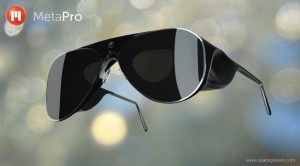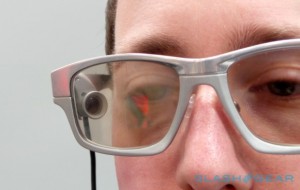 Shipping next June, the MetaPro glasses offer a significantly more immersive experience than Google Glass, but at a much higher cost…$3,000. You’ll wear a small computer to wirelessly communicate with the glasses, which can display full 720p HD in a 40 degree field of view. Potential applications for this all come down to software, which is a bit of a chicken and egg scenario. Nevertheless, with more products like this emerging onto the markets, I expect the software side of things to pick up pace in 2014. Meta claims their app store has 500+ apps, which is a great start even if you’re pessimistic and expect most of those to be junk.
Shipping next June, the MetaPro glasses offer a significantly more immersive experience than Google Glass, but at a much higher cost…$3,000. You’ll wear a small computer to wirelessly communicate with the glasses, which can display full 720p HD in a 40 degree field of view. Potential applications for this all come down to software, which is a bit of a chicken and egg scenario. Nevertheless, with more products like this emerging onto the markets, I expect the software side of things to pick up pace in 2014. Meta claims their app store has 500+ apps, which is a great start even if you’re pessimistic and expect most of those to be junk.
The one drawback? It has built in cameras. I think people are still going to be uncomfortable around others who are wearing glasses that may or may not be recording everything you say.
Read more over at SlashGear or check out Meta’s homepage to preorder.


 Shipping in 2013 for $399 are these heads-up display glasses from
Shipping in 2013 for $399 are these heads-up display glasses from